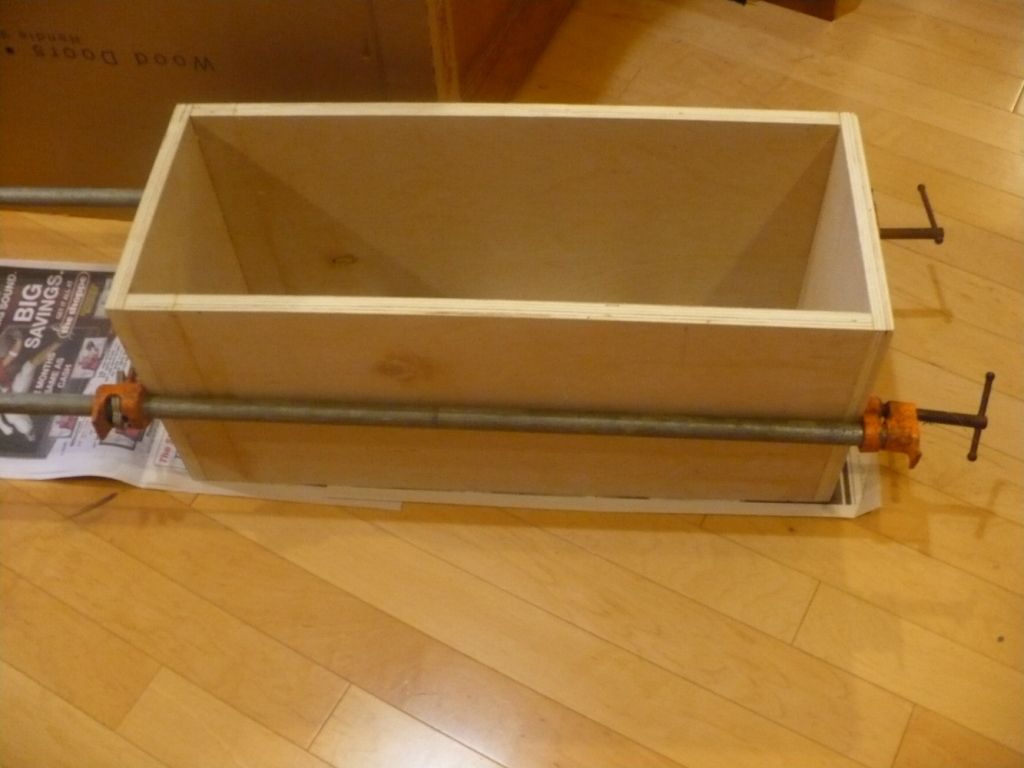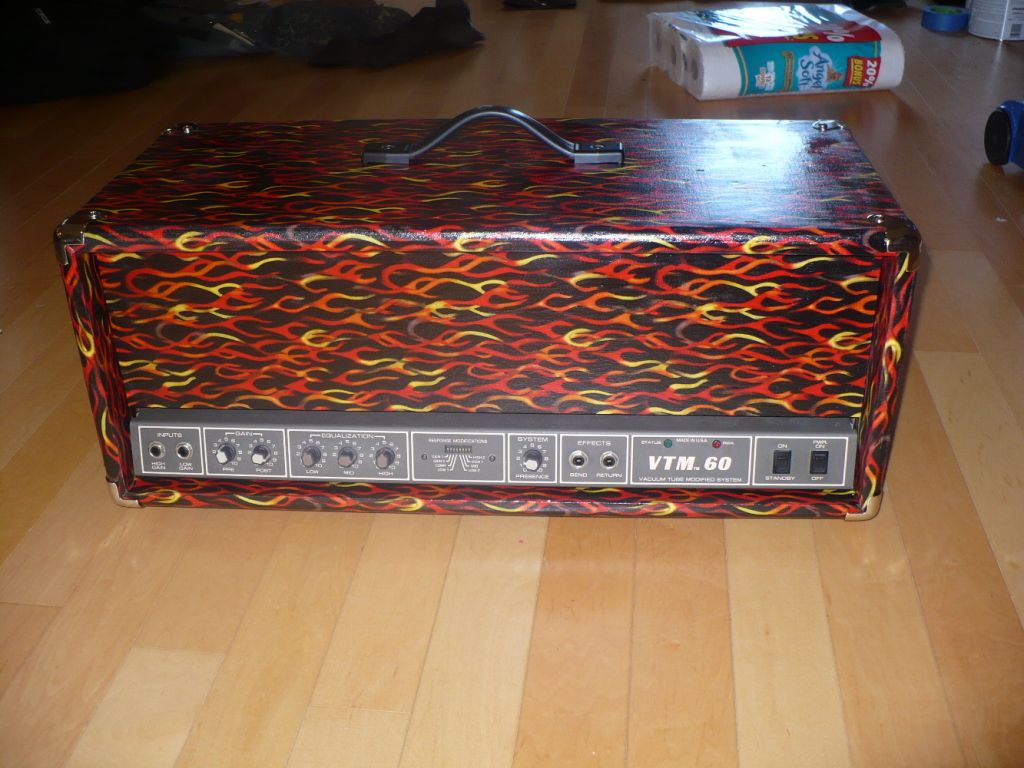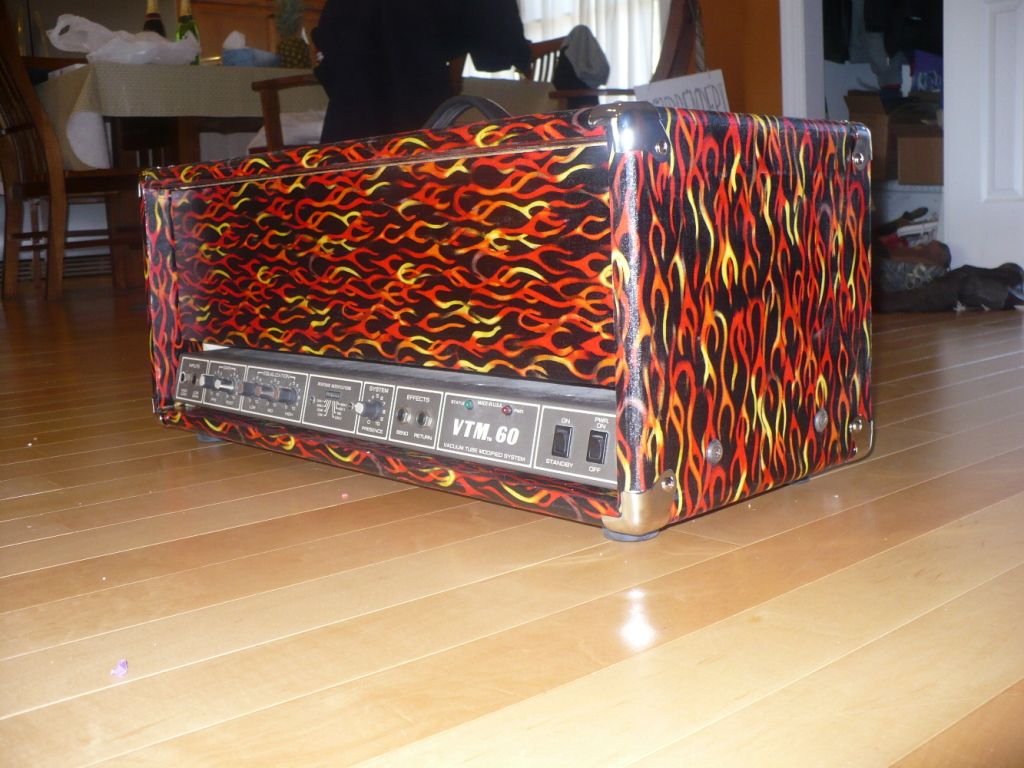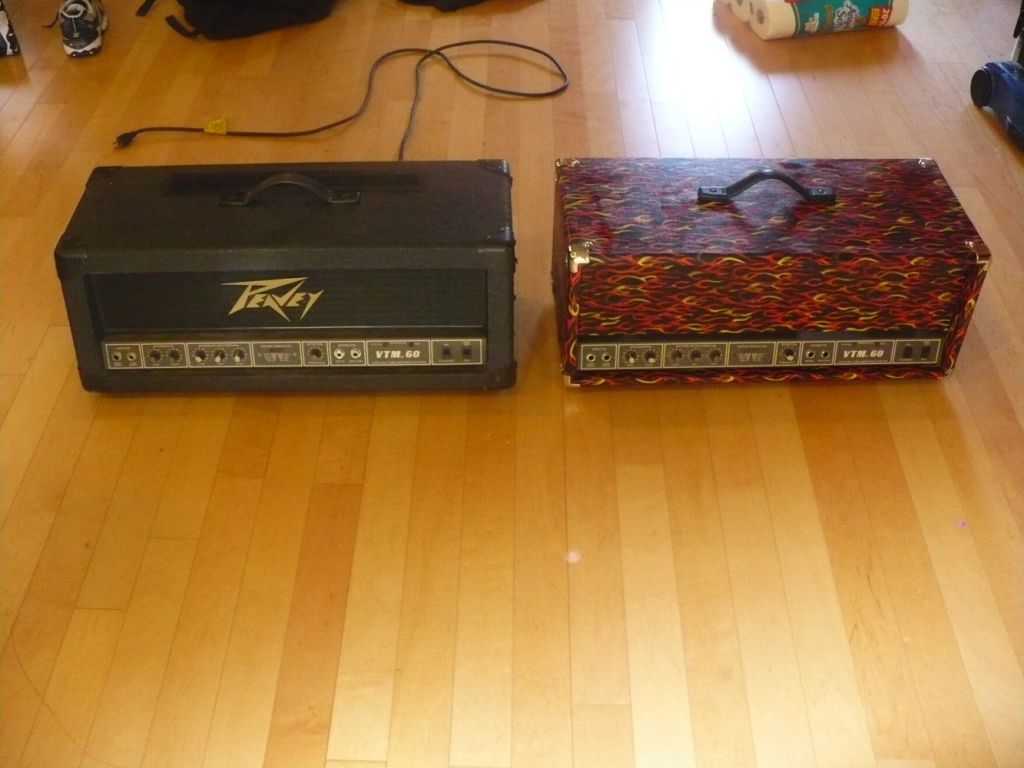Thanks, this whole time I was assuming it was a 4x12". Didn't know it had 10's in it.
Could you further explain what the ohm rating means?
Further explain? Yes.
Competently explain? Probably not.
Power tubes are high-output-impedance devices, they require a large resistance it order to get the sheer volume you desire out of relatively low currents. We are talking 3,200 to 10,000 ohms. Speakers are
not high-output-impedance devices. We are talking 4 to 16 ohms. Thus you need something inbetween as a "matching network"...the output transformer.
Output transformers have no
set impedance. Transformers are all about ratios. V{in}
:V{out}
The nominal power tube output resistance for Fender's 2x6L6GC setup is ~4,000-4,300 ohms. IIRC, the Super Reverb OT ratio is 2000
:1
- If you hook up a 8-ohm speaker (secondary impedance), that would be reflected back to the tubes as 16,000 ohms (primary impedance) 2000
:1=16000
:8
- If you hook up a 4-ohm speaker (secondary impedance), that would be reflected back to the tubes as 8,000 ohms (primary impedance) 2000
:1=8000
:4
- If you hook up a 2-ohm speaker (secondary impedance), that would be reflected back to the tubes as 4,000 ohms (primary impedance) 2000
:1=4000
:2
Thus to get the nominal 4,000-ohm primary load, you need to use a 2-ohm speaker load.
You can swap that OT out for one that has a different ratio...1000:1 would allow an optimal 4-ohm speaker load....500:2 would allow an optimal 8-ohm speaker load. Or a multi-tap OT will allow the choice between several loads. BTW, most OT's are listed by expected application...so the manufacturer won't say 500
:1, they will say 4000
:8.
Mismatching loads will result in a change of tone. In amps with smaller or cheaper OT's (not a problem for a Super Reverb which has massive iron), it can results in damage from too much current draw or too much voltage being reflected back from the speaker load. So, is it dangerous for the amp to mismatch...a lot depends on the amp construction and parts used. You've probably heard it's ok to mismatch a Fender or Marshall amp by a 2:1 or 1:2 ratio, and that's generally true. You should be able to safely drive a 4-ohm load with your SR, but it'll affect power output and tone to do so.
For versatility with multiple cabinets, I recommend removing and safely storing the original OT and installing a multi-tap.


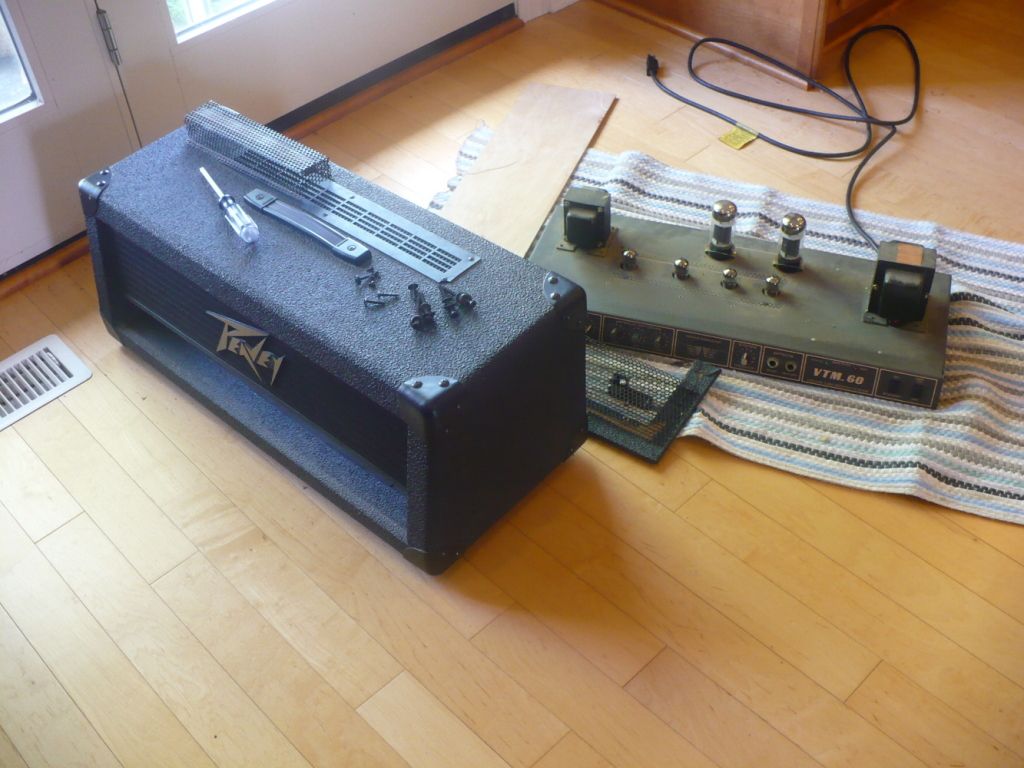



 I have a table saw, but no extensions, or anyplace to have a table saw with extensions, so if I need to cut anything bigger than 9", I clamp a straight edge, and run a circular saw up against it. From the edge of the plate, on the bottom of the saw, to the side of the blade is 1 1/4". Depending on which piece of wood you want, you either add, or subtract 1 1/4". I added, instead of subtracted, so shell was 2 1/2" too wide.
I have a table saw, but no extensions, or anyplace to have a table saw with extensions, so if I need to cut anything bigger than 9", I clamp a straight edge, and run a circular saw up against it. From the edge of the plate, on the bottom of the saw, to the side of the blade is 1 1/4". Depending on which piece of wood you want, you either add, or subtract 1 1/4". I added, instead of subtracted, so shell was 2 1/2" too wide. 
